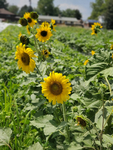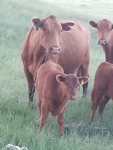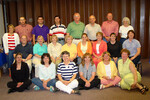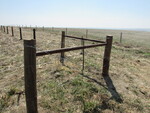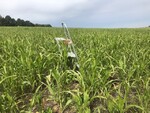Posted date: Feb 17, 2023
by: Admin My Local Life
1051 Views
retired NRCS District Conservationist
Have you heard of the "Dust Bowl" of the 1930s? Because of extreme drought and farming methods, a huge dust cloud made it to Washington D.C. Franklin D. Roosevelt was newly elected President. The United States was recovering from the Great Depression. The drought in the great plains caused the Dust Bowl and was made worse by the tillage methods used then.

Hugh Hammond Bennett was on Presidents Roosevelt"s staff. He testified before Congress about the Dust Bowl. Due to his experience as a soil surveyor, for USDA, he became convinced that soil erosion was a serious problem for farmers and America's food supply. Hugh Hammond Bennett was a pioneer and Father of soil conservation in the United States of America. He was the first head of the Soil Conservation Service, now the Natural Resources Conservation Service (NRCS).
Now we are in 2022. We are not in a current Dust Bowl, however, Sherman county and much of northwest Kansas received below-normal moisture during 2021. Productive soil must be healthy soil. This requires conservation practices that help keep cropland soil and rangeland soil healthy and productive in times of reduced moisture.
Now let's talk about Conservation Technical Assistance (CTA) provided by NRCS. Technical assistance is free! NRCS helps landowners and operators develop conservation plans on their land. Plans are for cropland, both irrigated and non-irrigated, rangeland and pastureland. These plans are always developed to aid farmers and ranchers meet their specific conservation goals. Since the 1980's local producers have intensified their adoption of many conservation practices here in Sherman county. There are over 150 conservation practices to choose from. Commonly used practices locally are: crop rotation, cover crops, contour farming, fence, grassed waterways, irrigation water management, livestock pipeline, nutrient management, prescribed grazing, range planting, reduced tillage, no-tillage, terraces, upland wildlife management, livestock watering tanks, livestock wells and windbreak establishment.
When an NRCS planner is working with a farmer or rancher, it's always the owner-operator who makes the decision on the practices they want to put into their conservation plan. When the producer chooses the practices they want, the NRCS planner will share information about possible State or Federal cost-share assistance that is available to the producer. The result of the conservation plan development is healthy soil for crop production and rangeland grazing systems. And another "Dust Bowl" is avoided.
Hugh Hammond Bennett quote: "Productive Soil is Life"
Your local NRCS office will help you develop a plan for your farm or ranch. This is no charge. You may be eligible to receive financial assistance through a State or Federal cost-share program. Contact your local NRCS office.


